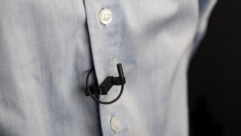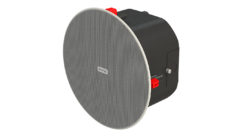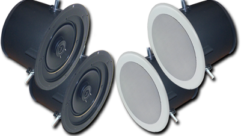
How Do You SPL Relief?
Apr 12, 2010 12:00 PM,
By George Petersen

Figure 1. OSHA-defined permissible noise exposure standards in the workplace.
Anyone who works with sound-reinforcement systems spends a lot of time dealing with a lot of unsolved mysteries. The most common of these is the issue of how loud is loud enough. Unfortunately, there’s no easy answer to this question.
In a typical installation (assuming such a thing exists), it’s a tough call for the operator—who may be a pro FOH mixer in a concert venue, a bartender setting background music levels in a lounge, a school janitor in a elementary school cafetorium, or a DJ in a trendy nightspot. People in the area closest to the PA get more, while those farther away get less.
Related Links

Pro Contracting Apps for Your iPhone
Sooner or later, you gotta start regarding Apple’s iPhone/iPod Touch as a serious platform…

While the weather outside may be frightful, February marks a great midwinter point for some (indoor) contemplation. It’s a time to assess your business needs for 2010 and get your inventory in shape for better times in the months ahead…

Episode One: The Electric Church
In the 1960s, the Electric Church was a movement (popularized by Jimi Hendrix and others) wherein electric music emphasized feelings and emotions in the listeners as a means of encouraging spiritualism. …
Simple enough, but as any installer knows, placing loudspeakers into any environment can create some interesting acoustical effects, including hot spots, cancellation nodes, under-balcony anomalies, and myriad other forms of general weirdness. Of course, these vary widely, depending on the configuration of the room and the number of audience members available to dampen the sound.
Seemingly, every person in the listening space has his or her own idea of what a proper level should be. Another issue stems from dealing with a room full of people with widely variant hearing ability, thus making the issue more difficult. And in most situations, the operator/mixer/janitor is in the back of the room, farthest from the sound source, so any judgment calls regarding proper levels become infinitely complex.
Beyond the technical, creative, and aesthetic (TCA) considerations of the loudness factor, there are also legal issues to bear in mind. And the legal aspects are just as convoluted as the TCA elements, as there are two related—yet entirely separate—problems to ponder: One concerns levels within the venue and how they relate to the health/safety of the patrons and workers; the other is venue-borne noise and how it affects neighbors and the surrounding environs.
Occupational Safety and Health Administration (OSHA) regulations are pretty specific about defining what it considers to be legally permissible sound exposures in the workplace. As shown in Figure 1, a cocktail server in a disco can only be exposed to a 100dB (A-weighted) levels for 2 hours a day; at 105dBA, that daily exposure drops to a mere 60 minutes.
Employers can distribute ear protection, which can provide 20dB to 30dB of broadband attenuation. This may be fine for someone operating a pneumatic driver on an assembly line, but communicating drink orders in a loud club while wearing earplugs is anything but easy. Yet it’s hard for operators to know exactly when they’re breaking the law. A sound-pressure level (SPL) meter at the mix position hears quite differently than one placed at table two, right in front of the PA cabinet.
Mindful of the situation, various hardware solutions have been proposed to address both hearing protection and “sound spill” issues. The Drawmer SP2120 Speaker Protector is a 2-channel analog processor that both protects drivers from overloads and keeps sound system operation below a maximum level threshold set by the contractor/installer.
Gold Line’s SPLSign is a rackmount SPL meter and measurement mic that interfaces with a large Betabrite display and can display sound levels (up to 123dB) as well as text messages of upcoming events, etc. The company also offers the SLC1, a 1RU SPL meter that, when preset levels are exceeded, trips a relay closure that can switch in a limiter or trigger a signal device (light/bell/etc.). A second relay causes the SLC1 to reduce levels by 6dB.
The issue of loudness should be extremely straightforward, yet it turns out to be anything but simple. But with a combination of awareness, education, and communication between clients and contractors, a safe and hopefully sane listening experience is possible for all.










